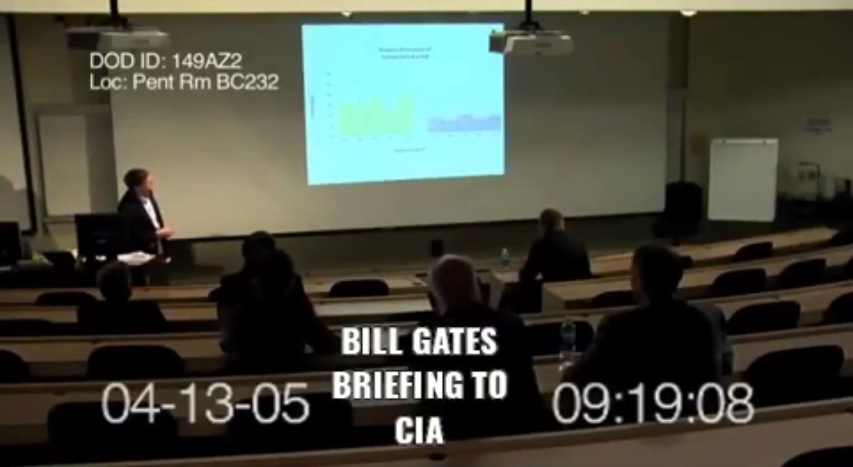Hillary Clinton, DNC and Fakestream Media Exposed by Nunez Committee Memo
Pastor Eli explains the significance of the Christopher Steele FAKE DOSSIER design to framed Donald Trump:
Contents of the Memo which was authorized for release by President Trump on Friday, Feb. 2, 2018:
https://www.vox.com/2018/2/2/16957588/nunes-memo-released-full-text-read-pdf-declassified
Read: the full text of the Nunes memo
The allegations aim to call the FBI and Justice Department’s professionalism into question.

The House Intelligence Committee just released the “Nunes memo” — and it contains some explosive allegations about the FBI.
Republicans on the House Intelligence Committee voted on Monday night to release the four-page memo, authored by Rep. Devin Nunes (R-CA), which alleges that the FBI abused its power in surveilling Donald Trump’s presidential campaign in 2016. The vote gave the president five days to review the classified document and decide whether it should be released for the public.
Despite objections from the FBI and Democrats, Trump authorized the release of the memo on Friday. Minutes later, the House Intelligence Committee released it to the public.
The memo makes several claims that could potentially threaten special counsel Robert Mueller’s Trump-Russia investigation.
Here are the memo’s key claims:
- The FBI used an unverified, allegedly biased document known as the “Steele dossier”to get a warrant in October 2016 to surveil Carter Page, a former Trump campaign adviser. The dossier, prepared by former British spy Christopher Steele, alleges the existence of a conspiracy between Donald Trump and the Russian government. The Steele dossier was partially financed by the Clinton campaign and the Democratic National Committee (DNC) — which the memo argues is a major problem.
- Senior FBI and Justice Department officials knew that the Steele dossier was indirectly funded by a lawyer for the Clinton campaign and the DNC, but didn’t disclose this in their application to the Foreign Intelligence Surveillance Act (FISA) court — a court that approves surveillance warrants pertaining to national security and foreign intelligence. They also didn’t disclose it when renewing their applications requesting additional time for surveillance.
- In September 2016, Steele spoke with Deputy Attorney General Bruce Ohr. Steele told Ohr that he “was desperate that Donald Trump not get elected and was passionate about him not being president.” Ohr’s wife worked for the research firm, Fusion GPS, that hired Steele on behalf of the DNC/Clinton lawyer.
- The head of the FBI’s Counterintelligence Division Bill Priestap apparently said corroboration of the Steele dossier was in its “infancy” at the time of the FISA application.
You can read the full text of the Nunes memo here:
And here’s the text of the memo reprinted in full below:
THE WHITE HOUSE
WASHINGTON
February 2, 2018
The Honorable Devin Nunes
Chairman, House Permanent Select Committee on Intelligence
United States Capitol
Washington, DC 20515
Dear Mr. Chairman:
On January 29, 2018, the House Permanent Select Committee on Intelligence (herein after “the Committee”) voted to disclose publicly a memorandum containing classified information provided to the Committee in connection with its oversight activities (the “Memorandum,” which is attached to this letter). As provided by clause 11(g) of Rule of the House of Representatives, the Committee has forwarded this Memorandum to the President based on its determination that the release of the Memorandum would serve the public interest.
The Constitution vests the President with the authority to protect national security secrets from disclosure. As the Supreme Court has recognized, it is the President’s responsibility to classify, declassify, and control access to information bearing on our intelligence sources and methods and national defense. See, e.g., Dep of Navy v. Egan, 484 US. 518, 527 (1988). In order to facilitate appropriate congressional oversight, the Executive Branch may entrust classified information to the appropriate committees of Congress, as it has done in connection with the Committee’s oversight activities here. The Executive Branch does so on the assumption that the Committee will responsibly protect such classified information, consistent with the laws of the United States.
The Committee has now determined that the release of the Memorandum would be appropriate. The Executive Branch, across Administrations of both parties, has worked to accommodate congressional requests to declassify specific materials in the public interest.(1) However, public release of classified information by unilateral action of the Legislative Branch is extremely rare and raises significant separation of powers concerns. Accordingly, the Committee’s request to release the Memorandum is interpreted as a request for declassification pursuant to the President’s authority.
The President understands that the protection of our national security represents his highest obligation. Accordingly, he has directed lawyers and national security staff to assess the declassification request, consistent with established standards governing the handling of classified information, including those under Section 3.1(d) of Executive Order 13526. Those standards permit declassification when the public interest in disclosure outweighs any need to protect the information. The White House review process also included input from the Office of the Director of National Intelligence and the Department of Justice. Consistent with this review and these standards, the President has determined that declassification of the Memorandum is appropriate.
Based on this assessment and in light of the significant public interest in the memorandum, the President has authorized the declassification of the Memorandum. To be clear, the Memorandum rejects the judgments of its congressional authors. The President understands that oversight concerning matters related to the Memorandum may be continuing. Though the circumstances leading to the declassification through this process are extraordinary, the Executive Branch stands ready to work with Congress to accommodate oversight requests consistent with applicable standards and processes, including the need to protect intelligence sources and methods.
Sincerely,
[signature]
Donald F. McGahn II
Counsel to the President
cc: The Honorable Paul Ryan
Speaker of the House of Representatives
The Honorable Adam Schiff
Ranking Member, House Permanent Select Committee on Intelligence
[Footnote]
(1) See, e.g., S. Rept. 114-8 at 12 (Administration of Barack Obama) (“On April 3, 2014 … the Committee agreed to send the revised Findings and Conclusions, and the updated Executive Summary of the Committee Study, to the President for declassification and public release.”); H. Rept. 107-792 (Administration of George W. Bush) (similar); E.O. 12812 (Administration of George H.W. Bush) (nothing Senate resolution requesting that President provide for declassification of certain information via Executive Order).
Declassified by order of the President
February 2, 2018
January 18, 2018
To: HPSCI Majority Members
From: HPSCI Majority Staff
Subject: Foreign Intelligence Surveillance Act Abuses at the Department of Justice and the Federal Bureau of Investigation
Purpose
This memorandum provides Members an update on significant facts relating to theCommittee’s ongoing investigation into the Department of Justice (DOJ) and Federal Bureau of Investigation (FBI) and their use of the Foreign Intelligence Surveillance Act (FISA) during the 2016 presidential election cycle. Our findings, which are detailed below, 1) raise concerns with the legitimacy and legality of certain DOJ and FBI interactions with the Foreign IntelligenceSurveillance Court (FISC), and 2) represent a troubling breakdown of legal processes established to protect the American people from abuses related to the FISA process.
Investigation Update
On October 21, 2016, DOJ and FBI sought and received a FISA probable cause order (up; under Title VII) authorizing electronic surveillance on Carter Page from the FISC. Page is aUS citizen who served as a volunteer advisor to the Trump presidential campaign. Consistent with requirements under FISA, the application had to be first certified by the Director or Deputy Director of the FBI. It then required the approval of the Attorney General, Deputy Attorney General (DAG), or the Senate confirmed Assistant Attorney General for the National Security Division. The FBI and DOJ obtained one initial FISA warrant targeting Carter Page and three FISA renewals from the FISC. As required by statute (50 U.S.C. 1805 (d)(1)) a FISA order on an American citizen must be renewed by the FISC every 90 days and each renewal requires a separate finding of probable cause. Then-Director James Comey signed three FISA applications. in question on behalf of the FBI, and Deputy Director Andrew McCabe signed one. Sally Yates, then-Acting DAG Dana Boente, and DAG Rod Rosenstein each signed one or more FISA applications on behalf of DOJ.
Due to the sensitive nature of foreign intelligence activity, FISA submissions (including renewals) before the FISC are classified. As such, the public’s confidence in the integrity of the FISA process depends on the court’s ability to hold the government to the highest standard, particularly as it relates to surveillance of American citizens. However, the rigor in protecting the rights of Americans, which is reinforced by 90-day renewals of surveillance orders, is necessarily dependent on the government’s production to the court of all material and relevant facts. This should include information potentially favorable to the target of the FISA application that is known by the government. In the case of Carter Page, the government had at least four independent opportunities before the FISC to accurately provide an accounting of the relevant facts. However, our findings indicate that, as described below, material and relevant information was omitted.
1) The “dossier” compiled by Christopher Steele (Steele dossier) on behalf of the Democratic National Committee (DNC) and the Hillary Clinton campaign formed an essential part of the Carter Page FISA application. Steele was a longtime FBI source who was paid over $160,000 by the DNC and Clinton campaign, via the law firm Perkins Coie and research firm Fusion GPS, to obtain derogatory information on Donald Trump’s ties to Russia.
a) Neither the initial application in October 2016, nor any of the renewals, disclose or reference the role of the DNC, Clinton campaign, or any party/campaign in funding Steele’s efforts, even though the political origins of the Steele dossier were then known to senior DOJ and FBI officials.
b) The initial FISA application notes Steele was working for a named U.S. person, but does not name Fusion GPS and principal Glenn Simpson, who was paid by a U.S. law firm (Perkins Coie) representing the DNC (even though it was known by DOJ at the time that political actors were involved with the Steele dossier). The application does not mention Steele was ultimately working on behalf of—and paid by—the DNC and Clinton campaign, or that the FBI had separately authorized payment to Steele for the same information.
2) The Carter Page FISA application also cited extensively a September 23, 2016, Yahoo News article by Michael Isikoff, which focuses on Page’s July 2016 trip to Moscow. This article does not corroborate the Steele dossier because it is derived from information leaked by Steele himself to Yahoo News. The Page FISA application incorrectly assesses that Steele did not directly provide information to Yahoo News. Steele has admitted in British court filings that he met with Yahoo News—and several other outlets—in September 2016 at the direction of Fusion GPS. Perkins Coie was aware of Steele’s initial media contacts because they hosted at least one meeting in Washington DC in 2016 with Steele and Fusion GPS where this matter was discussed.
a) Steele was suspended and then terminated as an FBI source for what the FBI defines as the most serious of violations—an unauthorized disclosure to the media of his relationship with the FBI in an October 30, 2016, Mother Jones article by David Corn Steele should have been terminated for his previous undisclosed contacts with Yahoo and other outlets in September—before the Page application was submitted to the FISC in October—but Steele improperly concealed from and lied to the FBI about those contacts.
b) Steele’s numerous encounters with the media violated the cardinal rule of source handling—maintaining confidentiality—and demonstrated that Steele had become a less than reliable source for the FBI.
3) Before and after Steele was terminated as a source, he maintained contact with DOJ via then-Associate Deputy Attorney General Bruce Ohr, a senior DOJ official who worked closely with Deputy Attorneys General Yates and later Rosenstein. Shortly after the election, the FBI began interviewing Ohr, documenting his communications with Steele. For example, in September 2016, Steele admitted to Ohr his feelings against then-candidate Trump when Steele said he “was desperate that Donald Trump not get elected and was passionate about him not, being president.” This clear evidence of Steele’s bias was recorded by Ohr at the time and subsequently in official FBI files— but not reflected in any of the Page FISA applications.
a) During this same time period, Ohr’s wife was employed by Fusion GPS to assist in the cultivation of opposition research on Trump. Ohr later provided the FBI with all of his wife’s opposition research, paid for by the DNC and Clinton campaign via Fusion GPS. The Ohrs’ relationship with Steele and Fusion GPS was inexplicably concealed from the FISC.
4) According to the head of the counterintelligence division, Assistant Director Bill Priestap, corroboration of the Steele dossier was in its “infancy” at the time of the initial Page FISA application. After Steele was terminated, a source validation report conducted by an independent unit within FBI assessed Steele’s reporting as only minimally corroborated. Yet, in early January 2017, Director Comey briefed President-elect Trump on a summary of the Steele dossier, even though it was—according to his June 2017 testimony—“salacious and unverified.” While the FISA application relied on Steele’s past record of credible reporting on other unrelated matters, it ignored or concealed his anti-Trump financial and ideological motivations. Furthermore, Deputy Director McCabe testified before the Committee in December 2017 that no surveillance warrant would have been sought from the FISC without the Steele dossier information.
5) The Page FISA application also mentions information regarding fellow Trump campaign advisor George Papadopoulos, but there is no evidence of any cooperation or conspiracy between Page and Papadopoulos. The Papadopoulos information triggered the opening of an FBI counterintelligence investigation in late July 2016 by FBI agent Pete Strzok. Strzok was reassigned by the Special Counsel’s Office to FBI Human Resources for improper text messages with his mistress, FBI Attorney Lisa Page (no known relation to Carter Page), where they both demonstrated a clear bias against Trump and in favor of Clinton, whom Strzok had also investigated. The Strzok/Lisa Page texts also reflect extensive discussions about the investigation, orchestrating leaks to the media, and include a meeting with Deputy Director McCabe to discuss an “insurance” policy against President Trump’s election.
FISA warrant fraud is BIGGER THAN WATERGATE: Globalist Left circles the wagons:
About Eli James
 Eli James is the author of The Great Impersonation. Much of his additional writings can be found at the Anglo Saxon Israel website.
Eli James is the author of The Great Impersonation. Much of his additional writings can be found at the Anglo Saxon Israel website.




